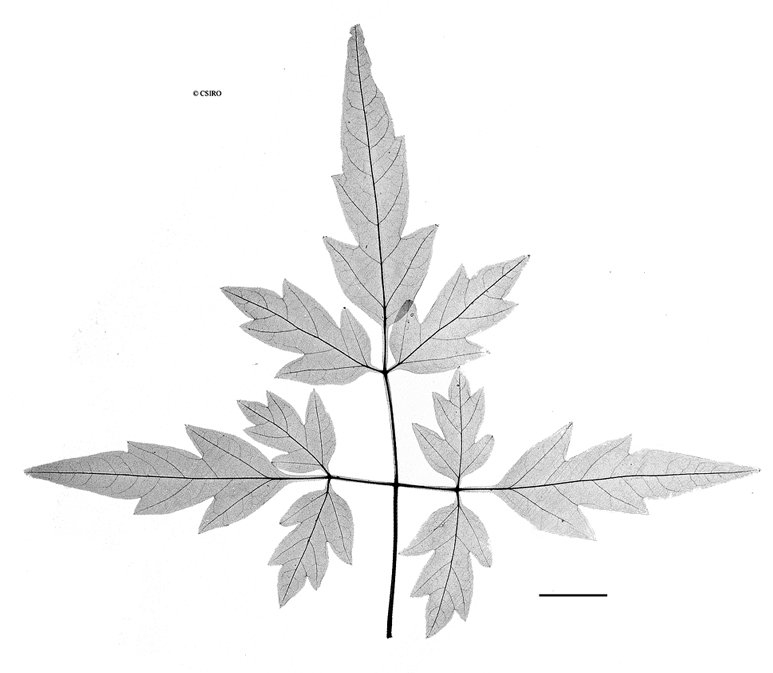Australian Tropical Rainforest Plants - Online edition
Cardiospermum halicacabum L. var. halicacabum
Linnaeus, C. von (1753) Species Plantarum 1: 366. Type: East Indies, collector unkown; holo: ?.
Blue Passionflower; Blue Passion Fruit
A slender vine, stem diameter not exceeding 2 cm.
Inflorescence umbel-like with 3 or 4 raceme-like branches. Coiled tendrils (1 or 2 pairs) usually in the inflorescence. Pedicels about 2-3 mm long. Sepals about 1-4 x 1-2 mm. Petals about 3-4.5 x 1.5 mm with large petal-like attachments on the inner (adaxial) surface. Stamens 8, filaments densely hairy. Disk small, swollen.
Cotyledons somewhat fleshy, about 6-9 x 2-2.5 mm. First pair of true leaves opposite, leaflet margins toothed, middle leaflet lobed ad larger than the lateral leaflets. At the tenth leaf stage: leaves bipinnate, each compound leaf consisting of 9 leaflets. Individual leaflets coarsely toothed and/or lobed. Stipules small, peg-like, about 1 mm long. Tendrils forked, each branch coiled to form a spiral tendril. Tendrils first produced at about leaf number 6. Stem with longitudinal ribs or grooves. Seed germination time 91 days.
An introduced species originally from tropical America. Now naturalised in WA, NT, CYP, NEQ, CEQ and southwards as far as southern and western New South Wales. Altitudinal range in northern Australia from near seal level to 400 m. Grows in a variety of habitats, frequently in creek or riverine vegetation, sometimes on rain forest or monsoon forest margins.
This species may have medicinal properties.







